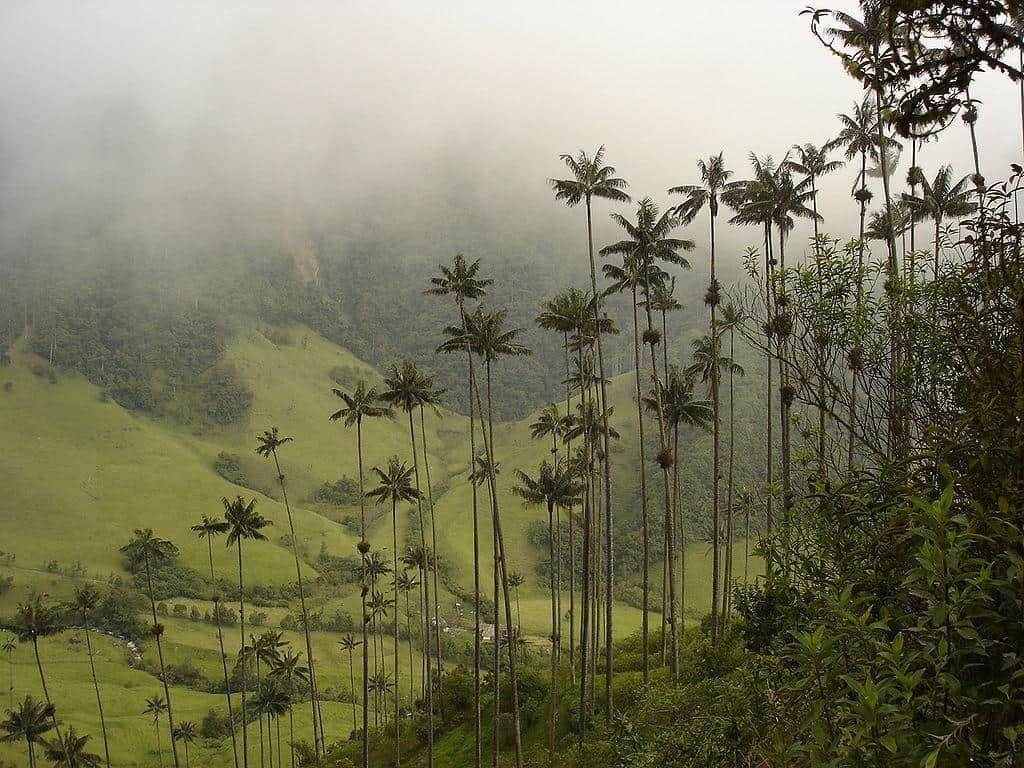Colombia is a privileged country because of its geographical location, cultural variety, diverse climates, flora, fauna, watersheds and natural resources. These geographical strengths have made Colombian agriculture a source of income for a large part of its inhabitants.
Agriculture plays a very important role in the economic development of the country. It is the main source of income for the nation’s rural areas, it makes a significant contribution to the country’s economic growth, poverty alleviation, food security, and sustainable development of Colombia. Colombia’s fertile land and vast agricultural promise is attracting many foreign investors.
Undoubtedly the Colombian highlands is the future of agriculture in Colombia. It is a region with more than seven million hectares with a productive destination and a potential of 14 million hectares. The Orinoquia region is on target to make the most agricultural investments in the coming years.
The foreign agroindustrial investments started with an extremely promising kickoff in Colombia.
The strong crusade to interest domestic and foreign investors and turn the country into a large agricultural pantry is bearing fruit.
The international border investment monitoring platform FDI Markets published that the countries that bet most on agriculture in Colombia are the United States, Israel, Spain, Canada, Mexico, Switzerland and the United Kingdom to promote fruit crops, alternative energy sources and timber, for the most part.
In the last years, 11 new Colombia farm investment projects and one expansion project have been launched, with a projected employment generation of over 2,500 jobs. These cases include Faber Castell, who allocated $4 million to the planting of more than 2,000 hectares of timber, and $10 million for the installation of a sawmill; Merhav-Group of Companies, which acquired 9,600 hectares for $90 million to plant cane and produce fuel alcohol, and Dole that set up a vegetable processing plant for salads, which required $18 million.
Where there is concrete evidence of an important agricultural growth in Colombia is in the planting of timber, backed by environmental bonds. Their is a long list of reforestation projects, which is supported by the map of the Rural Agricultural Planning Unit (Upra) that projects that by 2025 there will be 450,000 hectares.
These projects are being developed in all of the country’s distinct regions and besides using the necessary resources to take advantage of the land they have provided a great surge of employment in rural areas. In the first semester ProColombia identified a number of initiatives generating huge promise and a string of certified agricultural investments for US $ 335.9 million.
There is also the private equity fund 12TreeFinance Asset Management, of Germany, which invested $85 million in forest plantations in Puerto Carreño, Vichada, a biomass plant in the Orinoquia, as well as various hectares of cocoa crops in Urabá and the Magdalena Medio.
In the Magdalena Medio also, the Ingacot Group of Argentina utilizes no less than 1,000 hectares of soybean and corn crops, but not on land purchased by the fund, they lease the use of land to Colombian farmers.
With an investment of $18 million Poligrow of Italy will expand and modernize its oil extraction plant in Mapiripán. With the new infrastructure they will build they have the capacity to process about 45 tons of oil an hour and will increase from 7,000 to 15,000 hectares.The new infrastructure will correspond to businesses with investors and private producers through productive alliances and contract farming. Since 2012, this company provides electric service to Mapirián 24 hours a day.
In the Eastern Plains, cocoa and agroforestry crops are generating a real interest for mayor investors. Several entrepreneurs have already planted nearly 4,000 hectares of cocoa in Meta and 800 in Casanare, with high technology irrigation and quality seeds. In agroforestry, one of the projects promoted by the NGO Climate Focus channels resources to develop forages that allow livestock to be fed sustainably and in smaller spaces.
Experience the Insider community that takes your international lifestyle to the next level. Download your FREE guide
"18 Steps to Implementing Your Plan B" instantly!
All of these projects are not only helping to revitalize the agricultural sector in Colombia, they are having a major impact in the country’s economic prosperity. The Colombia Ministry of Commerce, Industry and Tourism (MinCIT) has just set an estimate for foreign direct investment (FDI) in 2018, for 14,000 million dollars. The figure would represent 4.3 percent of GDP, a level similar to what the indicator has shown in recent years.
And Colombia’s capital gains rate of 10% is efficient for US investors. The minimum rate for a US investor will be 20%. This is because your foreign capital gains flow through to your US personal return.
So, you will pay 10% in tax to Colombia on the sale and 10% to Uncle Sam. If Colombia’s rate were 20%, you would pay 20% to Colombia and zero to the US using the foreign tax credit. For more on this, see: Where to buy international real estate.
I hope you’ve found this article on Colombia to be helpful. For more information, or for assistance in investing in Colombia or opening an offshore company, please contact us at info@premieroffshore.com or call us at (619) 550-2743. We’ll be happy to assist you with your international planning and investments.
Like Our Articles?
Then make sure to check out our Bookstore... we have titles packed full of premium offshore intel. Instant Download - Print off for your private library before the government demands we take these down!






